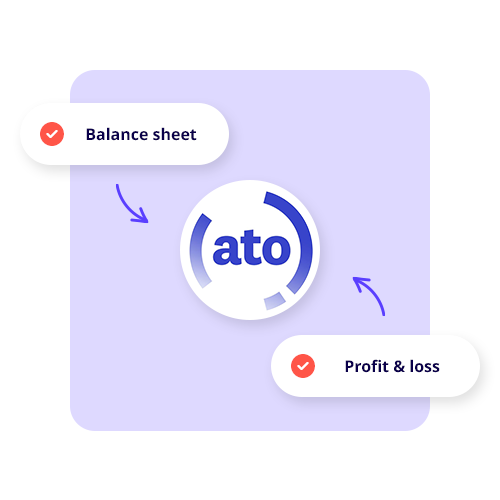Get 3 months free of Reckon Accounts Hosted online accounting software*.
Compliance made easy
Track your GST and prepare your BAS with integrated BAS lodgement via SBR, you can even get real-time validation and an estimate of BAS obligation or refund. Pre-built reports – including balance sheet, profit and loss and tax liabilities – mean you’ll have all the documentation ready to go for tax time.


Impressive reporting
Access 200+ reports designed to help you gather valuable business insights from your financial data and simplify a wide range of business and compliance activities. Run reports including job costs, profit and loss, estimates, unpaid bills, and much more. You can then modify, filter and memorise certain reports to suit individual company preferences.
Accounts Hosted has multi-company reporting, allowing you to connect multiple locations of your business such as subsidiaries, divisions or branches.
Get paid faster
Accounts Hosted makes it easy to customise, create, and email invoices to your customers. At a glance, see what’s been sent, paid and overdue. You can also process credit card payments and look up transactions, contact and billing information for your customers so you’ll never have to wait to be paid again!


Magnificent inventory management
Accounts Hosted lets you record, track and reconcile everything you buy and sell. Identify what items make you the most money and which items don’t. Quickly view your stock levels and even see what’s on order and when you can expect it. You can even manage and record transactions in different currencies.
Powerful payroll
Easily manage your payroll and employee obligations. Enter time, schedule pay runs, print or email pay slips and payment summaries, enter leave entitlements and more. Accounts Hosted is certified by the ATO as SuperStream compliant so you can automatically make superannuation contributions on behalf of your employees each month or quarter. Accounts Hosted also has integrated payment summary lodgement via SBR.
Accounts Hosted is Single Touch Payroll enabled and compliant with ATO regulation.


Analyse job profitability
Get deeper insight into your business with profitability summaries to document the amount earned or lost on individual projects. Analyse the accuracy of estimates for jobs, track how much time is spent on a particular job, and which employee or contractor has worked on it. You can even monitor vehicle expenses by distances traveled by job and vehicle.
A single online accounting solution.
All your business needs.
We’ve spent years perfecting our online accounting software.
“Accounts Hosted is absolutely brilliant. The price, support and ease of use of Accounts Hosted is so far ahead of MYOB. I would recommend it to anyone who requires an accounting software.”
Maree Wilkinson, Wild Orchard Restaurant
